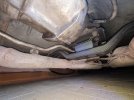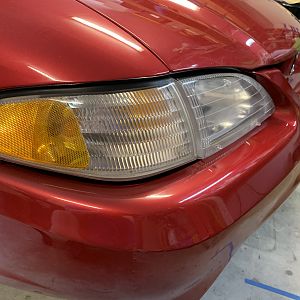I have a couple of basic questions, due to the lack of my experience and other cars to compare to. Would appreciate your help. 
1. Engine shake during idle. It can be felt in the seat when standing still, it is not very strong or annoying, but clearly felt. Engine seems to idle nicely based on RPM and sound. Engine mounts were replaced 5 years 2.000 miles ago to Summit Racing black PU mounts. Balancer also replaced same time to OEM replacment PowerBond Premium balancer. Is it normal, or shall I investigate?
2. Vibrating clutch when slowly taking off and releasing clutch pedal slowly. Like in stop/go traffic. Clutch was replaced same time as the above mentioned parts with a Perfection MU Series Clutch MU48-1M. I don't know if it was same behaviour right after replacing because at that time it was not my car. Is this normal behaviour, or something is not well set up maybe? I plan to replace my clutch quadrant and cable to adjustable Steeda kit because the pedal feels very heavy, but I guess this does not have to do much with the vibration.
3. Triax short throw shifter (Summit version). I think I have it correctly installed and the stop screws correctly set. Shifting feels vely precise, but some force has to be applied especially when shifting to 2nd gear. Is it normal?
I know, it might be difficult for you to judge because I can't objectively tell how much vibration and force is normal and how much is too much with these stuff...
1. Engine shake during idle. It can be felt in the seat when standing still, it is not very strong or annoying, but clearly felt. Engine seems to idle nicely based on RPM and sound. Engine mounts were replaced 5 years 2.000 miles ago to Summit Racing black PU mounts. Balancer also replaced same time to OEM replacment PowerBond Premium balancer. Is it normal, or shall I investigate?
2. Vibrating clutch when slowly taking off and releasing clutch pedal slowly. Like in stop/go traffic. Clutch was replaced same time as the above mentioned parts with a Perfection MU Series Clutch MU48-1M. I don't know if it was same behaviour right after replacing because at that time it was not my car. Is this normal behaviour, or something is not well set up maybe? I plan to replace my clutch quadrant and cable to adjustable Steeda kit because the pedal feels very heavy, but I guess this does not have to do much with the vibration.
3. Triax short throw shifter (Summit version). I think I have it correctly installed and the stop screws correctly set. Shifting feels vely precise, but some force has to be applied especially when shifting to 2nd gear. Is it normal?
I know, it might be difficult for you to judge because I can't objectively tell how much vibration and force is normal and how much is too much with these stuff...














